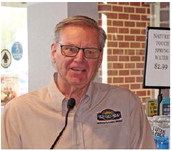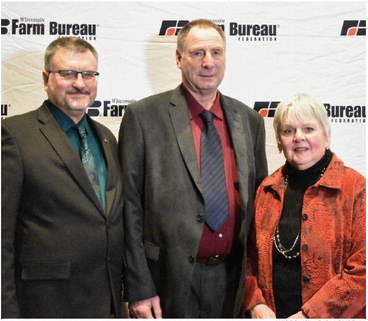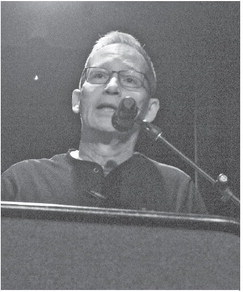Sign rule slowdown


There will be no changes in the city of Medford’s sign rules, at least for now.
At Monday’s planning commission meeting, commission members formally voted to take no action on the proposed changes which would have established rules for temporary signs in the city.
Mayor Mike Wellner asked for the motion to take no action on the ordinance at the advice of the city’s attorney. At the public hearing prior to the planning commission taking up the sign issue, Wellner said the city’s attorney is currently reviewing the ordinance with the intent of including specific exemptions for agencies such as Abiding Care Pregnancy Resource Center and others.
According to city planner Bob Christensen, the city’s current zoning codes do allow any temporary business, service or event promotion signs. He said under the current rules, groups would need to pay for a $150 conditional use permit and go through a hearing pro- See CITY on page 4 cess to place temporary signs.
The issue arose initially from commercial service house washing business signs being placed throughout the city on public right-of-way. Placement of signs in the right of way is generally prohibited due to traffic visibility issues, although some exceptions are made for things such as yard sale signs.
In addressing the commercial business temporary signs, Christensen came across the Abiding Care yard signs promoting their pregnancy resource services. These signs had been distributed to donors to the agency as a way to get the word out about the services provided for those facing unplanned pregnancies.
Abiding Care staff members note they have no control over how or where people place them in their yards.
The intent of the proposed ordinance was to provide a set of rules for temporary sign placement including size, number and length of time the signs can be displayed depending on the purpose of the sign. Under the proposed code change, signs would still not be allowed to be placed in the road right of way — this is typically 33 feet from the centerline of the road for most city streets.
According to Wellner, prior to this the temporary signs have not been a problem, but with business signs being put up the city wants to make sure it is applying the rules the same to everyone.
“We are dealing with something that isn’t a problem,” he said, explaining that it was always something that was not enforced. He said enforcing the rules for some people and not for others puts the city in a bad situation, as does having things in the code that aren’t being enforced.
“We are trying to make it as easy and uncomplicated as we can,” Wellner said, of the code revisions. He said Christensen has checked with other municipalities who have 10-page codes on temporary signs, which the city then cut down to series of bullet points.
He said prior to Monday’s meeting they met with the city attorney and it was her recommendation for them to hold off on taking action to give her time to review it and simplify it to bring it back at another meeting. He said those at the meeting would be invited back to that meeting when it was being reviewed.
During the public hearing, representatives from Abiding Care raised concern about the ordinance language that had been proposed.
“I am not sure what created this issue,” said Carrie Kraucyk, Executive Director at Abiding Care, noting the signs have been up for years.
Christensen explained that the city isn’t targeting Abiding Care, but they happened to be the sign that triggered the need to change the ordinance so that they would be allowed.
“The way the ordinance was written a long time ago, they are illegal,” he said.
Christensen noted that under the proposed language signs which contain information which is of interest to the community would be allowed and the Abiding Care signs would be under that.
Abiding Care supporter Carol Jahsman objected to the ordinance language that would limit the signs to just 20 in the city.
“I would really like to see there be more signs,” she said, noting that the more signs there are the more people could potentially see them and get the help they need.
“Why would [the city] want to limit the help for the people out there?” she asked, urging the city to raise the limit on the number of signs allowed.
Wellner noted that 20 was an arbitrary number picked for the ordinance and could be changed when either the planning commission or the city council review the new language after the attorney makes changes. City coordinator Joe Harris explained that they have to treat everyone the same. He said they went with a lower number to start with the idea that it could be changed and increased in the future if they found it needed to be. He also noted that the signs only impact those in the city limits.
“We are not restricting Taylor County,” he said. “What if there are too many signs?” Jahsman asked. Christensen responded by asking how many signs Abiding Care currently had out. Kraucyk said they gave out 100 of them at their last fundraising banquet, but that included people from all over Central Wisconsin.
Christensen said, that under the language the way it had been proposed, having more than 20 signs in the city would require Abiding Care to go through the conditional use permit process with a public hearing and pay the fee which would cover all signs over 20.
However, Christensen was quick to note that the city had no intention to drive around and count the signs and that the number of signs was arbitrary and could be changed and that the city was “not going to die on this hill” regarding the number of signs.
“The question is who is going to be the Abiding Care cop?” he said.
Jahsman replied that while the city might be going out and counting signs, other people who don’t share the right to life mission of Abiding Care may.
“We are looking at the two extremes,” Wellner said, noting the city had no intention of strongly enforcing the sign numbers. He also noted that he walks around the city a lot and doubted there were even 20 signs currently being displayed.
Kraucyk said it would be a logistical nightmare to try to keep track of where all their supporters have placed signs.
Harris explained that from the city’s perspective sign numbers would not be an issue until someone brought it up. He said at that point they would work with the group to find a solution.
Jahsman asked the city to consider setting it at 50 signs. “It would like to get more signs up rather than less,” she said.
The question was raised if there were people wanting signs against what Abiding Care believes, and if they would feel differently if those were being displayed around the city.
Kraucyk said she would be fine with people putting up signs in their private yards for whatever reason.
Harris emphasized that it was not about the message of the signs, but about wanting to work to make the city look nice, while also allowing people to have signs.
“We want to find a happy medium,” he said. He noted that when you compromise, not everyone is happy but their goal is to find that compromise.
Wellner further noted that the city had no intention of penalizing people for having too many signs.
Christensen said that he had been with the city since 1999 and the signs have not been an issue until now. He said they found a spot in the codes that needed to be fixed and are working to fix it to allow the signs.
Christensen also emphasized that the signs the city is attempting to regulate are different than political types of yard signs which are governed by federal law and are an expression of free speech.
“We are only dealing with signs that promote some sort of service, or activity,” Christensen said.
Harris also emphasized that the city did not consider the ordinance “one and done” but that it could be changed to increase the sign numbers as needed in the future.
“If you don’t have anything to back it up, why not start with a higher number?” asked Jahsman.
Commission members voted to take no action on the proposed sign ordinance change. This will allow it to come back at a future meeting for consideration and possible action.
In other business, commission members:
Recommended approval of an ordinance change which will allow “twin home” lots. The ordinance will allow the owner of a duplex built after 1980 to legally divide the structure and adjoining property into two lots with the shared wall. The date is because this is when Uniform Dwelling Codes were implemented to mandate the fire breaks between the two sides of the duplex. Additional conditions are on the size of each parcel being created, that a certified survey map is filed to separate the parcels and that they are served by their own separate utility hook ups. The change was intended to allow for more intense development and give more home ownership options.
Recommended adopting a new flood plain zoning ordinance that includes an updated map. FEMA updated its floodplain map and for the city to be in the flood insurance program the city must adopt the new map along with the model ordinance from the Wisconsin Department of Natural Resources. “We don’t have a lot of development in floodplains,” Christensen said, stating it will have a minimal impact to the city.
Recommended approval for annexing a parcel the city purchased earlier this year adjacent to the Pep’s Drive property with the goal of using it for one and two family residential development. Although it is owned by the city of Medford, the annexation process formally makes it part of the city.
“If you don’t have anything to back it up, why not start with a higher number?”
— Carol Jahsman calling for the number of yard signs allowed to be higher than 20




